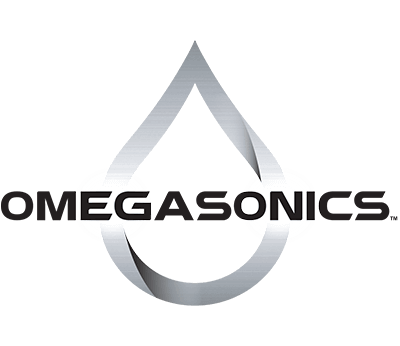Whether you’re cleaning fire-damaged electronics, restoring antique jewelry, or maintaining industrial tools, ultrasonic cleaners are among the most effective and efficient cleaning technologies available today. They offer speed, precision, and consistent results across a wide range of materials and industries.
In this comprehensive guide, we’ll cover:
- What ultrasonic cleaning is
- How ultrasonic cleaners work
- Key components of a system
- What can (and can’t) be cleaned
- Applications in different industries
- Pros and cons of ultrasonic cleaning
- Choosing the right unit
- Tips for proper use and maintenance
Let’s dive in.
What Is Ultrasonic Cleaning?
Ultrasonic cleaning is a process that uses high-frequency sound waves to agitate a cleaning solution, which in turn removes contaminants from surfaces. This method is particularly effective for objects with complex shapes, crevices, or delicate materials that traditional cleaning methods may not reach or could damage.
How Ultrasonic Cleaners Work
At the heart of ultrasonic cleaning is a phenomenon called cavitation.
Step-by-Step Breakdown:
- High-frequency sound waves (typically 20–80 kHz) are generated by a transducer inside the tank.
- These waves pass through a liquid cleaning solution, creating microscopic bubbles.
- The bubbles rapidly form and collapse, generating intense energy at a microscopic level.
- This energy lifts dirt, grime, soot, carbon, oxidation, and contaminants from the surface of the submerged item.
The Science of Cavitation:
The implosions of these bubbles create shockwaves that physically dislodge particles—without damaging the underlying material. It’s like thousands of tiny brushes scrubbing every inch of a surface at once.
Key Components of an Ultrasonic Cleaning System
- Tank: Usually made of stainless steel and filled with water or a cleaning solution.
- Transducer: Converts electrical energy into ultrasonic waves.
- Generator: Powers the transducers.
- Heater (optional): Warms the solution for improved cleaning performance.
- Basket or Tray: Holds items without touching the tank floor.
- Lid: Helps retain heat and reduce noise.
What Can Be Cleaned in an Ultrasonic Cleaner?
Common Items:
- Electronics & circuit boards
- Fire-damaged contents
- Jewelry & watches
- Eyeglasses & optical parts
- Dental and surgical tools
- Automotive parts (carbs, injectors, valves)
- Firearms
- HVAC components
- Coins and antiques
- Printing & tattoo equipment
- Ceramics and glassware
- Tools and mechanical parts
In Fire & Disaster Restoration:
Ultrasonic cleaning is one of the most powerful tools for restoring:
- Electronics affected by soot or smoke
- Contents like figurines, dishes, tools, or collectibles
- Delicate heirlooms and sentimental valuables
- Metal items with oxidation or corrosion
What Should NOT Be Cleaned Ultrasonically?
Avoid using ultrasonic cleaners on:
- Soft gemstones (pearls, opals, emeralds)
- Items with glued components (some costume jewelry)
- Electronics with unsealed batteries
- Some painted surfaces (test first)
- Very fragile antique items (depending on condition)
Cleaning Solutions: Water Alone Isn’t Enough
Ultrasonic cleaning typically uses a specially formulated solution. The right chemistry improves cavitation, breaks down soils, and protects the item being cleaned.
Types of Solutions:
- General-purpose: For light oils and particulates
- Heavy-duty degreasers: Automotive and machinery parts
- Neutral pH: Electronics and sensitive materials
- Descalers: Calcium/lime deposits
- Enzyme-based: Medical instruments and organic material
- Rust inhibitors: Metals post-cleaning
Always match your solution to the object and contaminants.
Benefits of Ultrasonic Cleaning
✅ Precision cleaning of intricate items
✅ Non-contact method reduces risk of damage
✅ Fast turnaround time
✅ Environmentally friendly when using water-based solutions
✅ Scalable for small tools to large industrial parts
✅ Improves restoration efficiency and invoice value
Industries That Use Ultrasonic Cleaners
- Fire and contents restoration
- Medical & dental clinics
- Automotive & aerospace
- Electronics & PCB manufacturing
- Watchmakers and jewelers
- Tattoo & piercing studios
- Laboratories
- Gun shops & law enforcement
- HVAC and appliance repair
In disaster restoration, ultrasonic cleaners save thousands of items from being declared “non-restorable.”
Choosing the Right Ultrasonic Cleaner
Consider These Factors:
- Tank size: Match it to the size/volume of items
- Frequency: Lower (25-40kHz) for heavy-duty, higher (60-80kHz) for delicate items
- Power: More watts = more aggressive cleaning
- Heating option: Improves effectiveness
- Filtration systems: For contents restoration, filtration extends bath life
- Number of stages: For advanced workflows (rinse/dry stations)
Brands like Omegasonics offer modular systems ideal for assembly line cleaning in restoration.
How to Use an Ultrasonic Cleaner (Step-by-Step)
- Fill the tank with water and appropriate solution.
- Degas the solution (run it empty for 10–15 min) to remove trapped air.
- Place items in a basket, ensuring they’re not touching.
- Set the timer and temp based on the material and soil.
- Run the cycle, typically 3–10 minutes.
- Rinse and dry items thoroughly after cleaning.
- Replace solution regularly based on use and contamination.
Maintenance & Best Practices
- Clean the tank daily to avoid cross-contamination.
- Change solution per manufacturer recommendations.
- Wipe down the unit and check for leaks or corrosion.
- Run tests to confirm consistent cleaning.
- Use lids to reduce heat loss and noise.
Proper maintenance = longer life and better performance.
Myths & Misconceptions
❌ “Ultrasonic cleaning damages everything.”
→ Only if used improperly. It’s safe for most materials.
❌ “More power is always better.”
→ Not true. High power can damage delicate items.
❌ “All cleaners are the same.”
→ Industrial units (like Omegasonics) outperform cheap consumer models by a wide margin.
❌ “Just use water.”
→ Solutions dramatically improve results and protect materials.
Final Thoughts: Why Every Manufacturing Company Should Invest in Ultrasonic Cleaning
If you’re in the restoration or repair business, ultrasonic cleaners are not just a tool—they’re a competitive edge.
With the right training and setup, your ultrasonic line can:
- Increase throughput
- Save labor time
- Restore more items (higher invoice value)
- Improve customer satisfaction
- Build your reputation with adjusters and clients
And if your system is collecting dust? It’s time to revive it—with proper training, marketing, and modern workflows.
